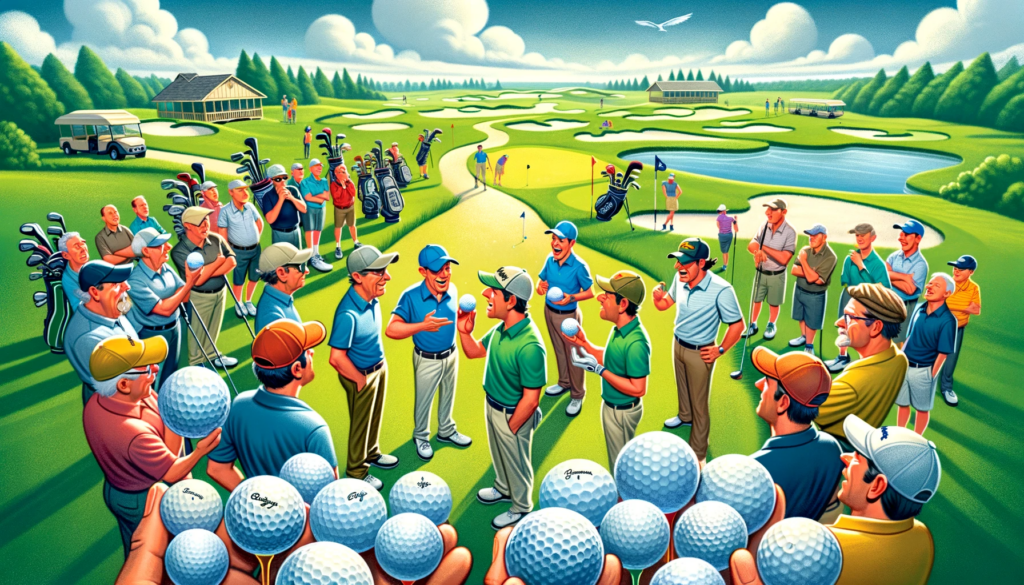Golf has always had a rich history of rules, regulations, and standards that govern the game, ensuring fairness and maintaining the integrity of the sport. The United States Golf Association (USGA), one of the governing bodies related to golf, has recently introduced new golf ball regulations that have sparked discussions and debates among professional and amateur players alike.
The implications of these regulations have the potential to significantly impact the game at all levels, from PGA golfers to recreational players.

How Will the New USGA Golf Ball Regulations Affect PGA Golfers?
When it comes to professional golf, every small change in equipment rules can have a significant impact on the game. The new USGA golf ball regulations are no exception. One key area that PGA golfers will need to consider is the impact on overall distance.
With the new specifications, golf balls must conform to strict criteria in terms of dimensions and weight, potentially affecting the distance they can achieve with their shots.
PGA golfers will also need to adjust to the new golf ball specifications, particularly in terms of equipment changes. The changes in golf ball dimensions, with a requirement of 1.680 inches (42.67 mm), might require for adaptation in clubhead speed and swing speed to achieve the desired results while conforming to these new rules.
| Criteria | Old Testing Conditions | New Testing Conditions (Effective January 2028) |
|---|---|---|
| Clubhead Speed | 120 mph (equivalent to 176 mph ball speed) | 125 mph (equivalent to 183 mph ball speed) |
| Spin Rate | 2520 rpm | 2200 rpm |
| Launch Angle | 10 degrees | 11 degrees |
| Overall Distance Standard Limit | 317 yards with a 3-yard tolerance (unchanged) | 317 yards with a 3-yard tolerance (unchanged) |
| Expected Impact on Longest Hitters | – | Reduction of 13-15 yards in drive distance |
| Impact on Average Professional Tour and Elite Male Players | – | Reduction of 9-11 yards |
| Impact on Average LPGA or LET Player | – | Reduction of 5-7 yards |
| Distance Impact on Recreational Golfers | Minimal | Minimal, 5 yards or less |
| Conformance Approval for Existing Balls | – | Approved for use until January 2030 |
| Percentage of Current Market Models Remaining Conforming | – | Over 30% of all models submitted |
| Additional Measures | – | Expanded testing for ‘Driver Creep’, monitoring drivers, and researching forgiveness of drivers |
What Do the New USGA Golf Ball Regulations Mean for Amateur Players?
Amateur players, including those competing at a recreational level or in organized amateur tournaments, will also need to understand and adapt to the new USGA golf ball regulations. It is essential for them to comprehend the changes in golf ball dimensions and the implications it may have on their game.
Adapting to the new rules on the golf course will be crucial for maintaining fairness and consistency in the game.
Furthermore, the impact of the new regulations extends to amateur competitions and tournaments. The changes in golf ball specifications may necessitate adjustments in the way these events are organized and played, potentially leveling the playing field and ensuring fair competition among participants.
Exploring the USGA Rules on Golf Ball Specifications
The new USGA rules on golf ball specifications entail several key points that reflect the governing body’s priorities in maintaining the integrity of the game. Understanding these regulations is essential for all players, from professionals to amateurs, as they directly influence the equipment used in the game.
One crucial aspect of the regulations pertains to the details on golf ball dimple requirements. With a specific dimple pattern and depth, golf ball manufacturers will need to ensure that their products conform to these new standards, aligning with the USGA’s stringent requirements.
Significance of the Golf Ball Rollback in the USGA Regulations
The implementation of the golf ball rollback in the USGA regulations has garnered attention for its potential impact on professional golf tours. Professional players, such as those on the PGA Tour and LPGA, may need to employ new strategies to adapt to any reduction in the distance their golf balls cover due to the rollback.
Moreover, the anticipated impact on player performance adds another layer of significance to the golf ball rollback. Golfers and manufacturers will likely explore innovative strategies and technological advances to mitigate any potential decrease in performance resulting from the new regulations.

How the New USGA Golf Ball Regulations Impact Equipment Choices
For both professional and amateur players, the new USGA golf ball regulations will influence their equipment choices significantly. Considerations for golf ball selection will need to account for the specific dimensions and weight requirements outlined by the USGA.
Furthermore, technological innovations in golf ball design will be crucial for manufacturers aiming to produce high-performing golf balls that comply with the new rules.
Additionally, the implications for golf ball fittings and customization will be crucial for players seeking to optimize their equipment based on their individual preferences and playing styles. The new regulations will necessitate a thorough understanding of how these changes impact equipment choices across the board.
In conclusion, the new USGA golf ball regulations mark a notable milestone in the game’s history, ushering in changes that are expected to reshape the way golf is played and experienced by professionals and amateurs alike.
Adapting to these regulations will require a concerted effort from all stakeholders in the golfing community, ensuring that the game continues to thrive while upholding its fundamental principles of fairness and integrity.
FAQs
What are golf ball regulations?
Golf ball regulations refer to the set of rules established by governing bodies like the USGA and The R&A. These rules dictate the size, weight, symmetry, and performance characteristics of golf balls used in official play. The regulations ensure that no unfair advantage is gained through specialized or modified golf balls.
What golf balls are allowed in a PGA tournament?
In PGA tournaments, players must use golf balls that conform to the regulations set by the USGA and The R&A. These include specific requirements for size, weight, and construction. The USGA and The R&A maintain a list of conforming golf balls that are permissible in tournament play.
What is the rule for changing golf balls during a round?
Under Rule 4.2 of the Rules of Golf, a player is generally not allowed to change balls during the play of a hole. However, a ball can be substituted when it becomes damaged, lost, or unplayable. A player may also change golf balls between the play of two holes.

Can PGA players change balls between holes?
Yes, PGA players are allowed to change golf balls between holes. This is not in violation of any rule, as each hole is considered a separate entity in the round of golf.
What is Rule 4.2 in golf?
Rule 4.2 in golf pertains to the ball that players use during a round. It sets the standards for permissible balls and includes provisions for when and how a ball can be substituted. The rule aims to ensure fairness and consistency in the equipment used during play.
What is the 1 ball rule in golf?
The “One Ball Rule” is a condition of competition that some tournaments might implement, requiring a player to use the same brand and model of ball throughout a round. This rule is not universally applied and is usually specified in the tournament’s conditions of play.
What are the rules for conforming golf balls?
The rules for conforming golf balls are set by the USGA and The R&A. They include specifications on size (not less than 1.680 inches in diameter), weight (not exceeding 1.620 ounces), spherical symmetry, and the ball’s performance characteristics such as velocity and distance. The balls must not have properties that would offer an unfair advantage in play.







